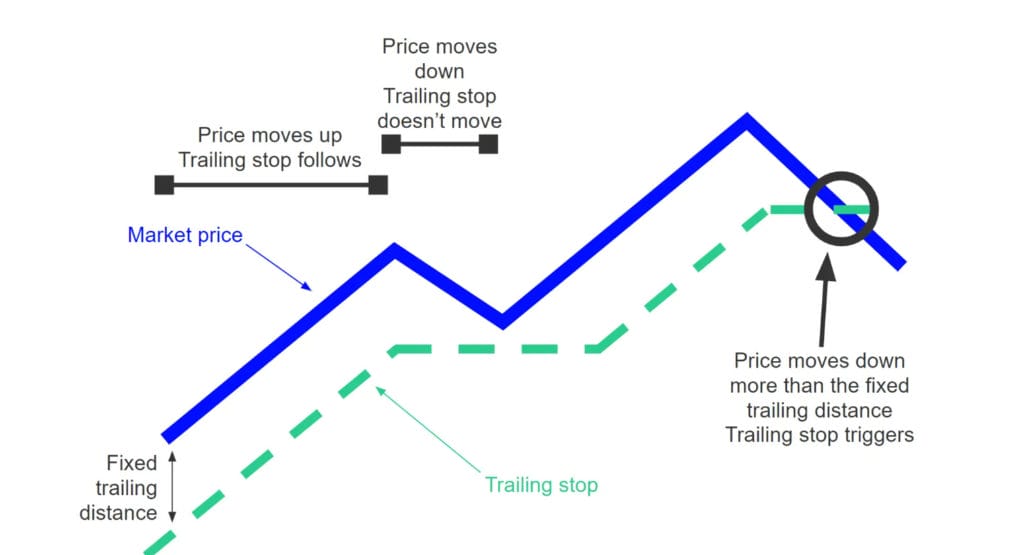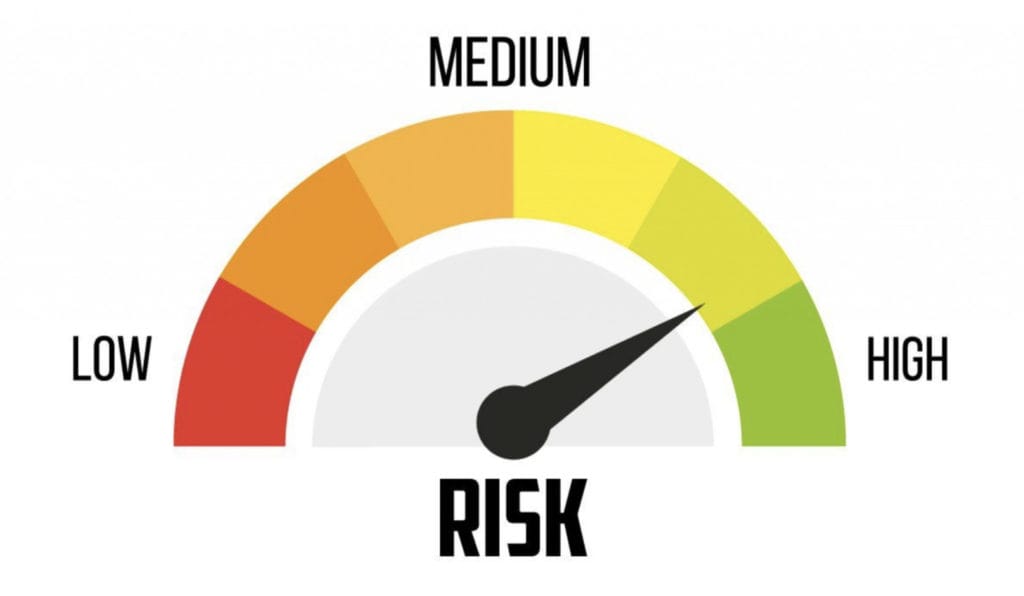Stop-loss Simplified: Guarding Your Investments With Ease
In the ever-changing world of investing, where stocks and bonds can go up and down like the wind, there’s one term that’s been a lifesaver for traders. It’s called “Stop Loss” and it’s the key to keeping your money safe even in the face of financial chaos.
Join us as we explore Stop Loss, its strengths and weaknesses, and how mastering this fundamental trading tool can unlock your trading potential.
Table of Contents
What is Stop-loss?? ????????
- In today’s volatile and unpredictable stock market trading environment, a “Stop-Loss” is essential for both investors and traders. It’s your insurance policy against big losses, so you can play the market with confidence.
- As the world’s markets continue to experience unprecedented volatility, it’s important to make sure you’re well-equipped with the tools and knowledge you need to protect your investment.

- A stop loss is also known as a stop-loss order or stop-loss order. It’s an order that’s placed with a trading platform or broker when the price of a security (e.g. a stock, a currency, or a cryptocurrency) reaches a certain level.
- The goal of a stop-loss is to reduce the risk of losses by exiting the trade or investment when the price changes against the trader’s or investor’s position.
- For example, if you purchase a stock for $100 per share with a stop loss of $95 when the price of the stock drops to $95 or lower, your brokers or trading platform will sell the stock to avoid further losses.
- This helps traders and investors protect their capital and mitigate their risk by providing a pre-determined exit point in the event that the trade goes awry.
Types of Stop-loss
There are two types of stop-loss orders in the share market:
- Fixed Stop-Loss Order.
- Trailing Stop-Loss Order.
Also Read–> How To Trade Triple Top and Bottom Pattern
Fixed Stop-loss Order
- This type of stop-loss order is placed at a predetermined percentage below the purchase price.
- If the asset price falls by or below this percentage, a stop loss order will be triggered and the asset will be sold.

Trailing Stop-loss Order
- Trailing stop loss orders are flexible and adjust to changes in the asset’s price. It is set at a fixed level or one percent below the current market price.
- As the price of the asset increases, the stop-loss order also increases. If the price starts to fall, the stop loss order remains at the highest level and is only triggered when the price falls by a certain level.

Join Coincodecap Signals to level up your trading game with automated trading and accurate trading signals with proper explanation.
Understanding the importance of stopping losses
1. Capital preservation
- Stop losses are like a safety net around your investments. By setting a specific exit point, you’re protecting your money from big losses. This is especially important in markets where prices can go up and down quickly.
2. Emotion Control
- Emotional trading can lead to impulsive trading decisions made based on fear or greed.
- A good stop loss eliminates the risk of emotional trading, allowing you to stay true to your trading strategy.
3. Avoid losses
- If you don’t have a stop-loss order, the price of your investment could drop drastically, resulting in significant losses. A stop-loss order prevents this from happening and protects your capital.
Also Read –> How to Trade Piercing Candlestick Pattern
How to use Stop-loss
1. Technical analysis
- Support and Resistance Levels These are price levels at which an asset tends to find buying support or selling resistance pressure.
- Traders may place stop-loss orders just below a support level to protect against significant declines or just above a resistance level to guard against a breakout to the upside.
- Moving Averages Moving averages are trend-following indicators that smooth out price data over a specific period.
- Traders often use moving averages to identify trends and potential trend reversals.
- They may set stop-loss levels based on how an asset’s price interacts with these moving averages.
- Technical Indicators Traders can employ various technical indicators like Relative Strength Index RSI, Moving Average Convergence Divergence MACD, or Stochastic Oscillator to gauge the strength and momentum of price movements.
2. Risk tolerance
Personal Financial Situation
- Begin by evaluating your overall financial situation.
- Consider factors such as your current savings, income, expenses, and existing investments.
- Understanding your financial standing can help you determine how much capital you can afford to put at risk in a trade without risking your finances.

Investment Goals
- Are you looking for short-term gains, long-term wealth accumulation, or a balance of both? Different goals may require different risk tolerances.
- For example, long-term investors may be more tolerant of short-term price fluctuations, while short-term traders might have a lower tolerance for risk.
Check out –> How to Trade Harami Candlestick Pattern
3. Volatile
High Volatility
High-volatility assets can experience big price changes in a short period. This can lead to big gains, but it also carries a higher risk. As a result, traders typically set wider stop-loss limits for highly volatile assets.
Low Volatility
Low-volatility assets tend to be more stable and gradual in price movements. They are considered less risky, but may not offer as much profit potential. Therefore, traders may set tighter stop loss limits for these assets, as there is less chance of big price movements.
A common mistake to avoid.
- Setting Stop Losses Too Tight:
- Setting stop-loss orders very close to the current market price is a common mistake traders make. Although it might seem like a smart way to prevent big losses, having stop loss levels too tight can cause them to activate too soon.
- Neglecting Stop Loss Orders:
- If you’re not using stop-loss orders, you’re making a big mistake. When you don’t have stop losses in place, your investments are exposed to risk like never before. Market conditions can fluctuate quickly, and events that aren’t expected can cause significant price drops.
- Moving Stop Losses Up:
- Some investors mistake setting their stop loss too high when a trade goes their way. It looks like they’re locking in profits, but it can take away the protection of their stop loss. A stop loss is meant to limit losses, not make gains. If you move your stop loss up too soon, you could end up with bigger losses if things turn around.

Conclusion
Stop-loss orders are important for anyone who trades or invests. They help manage risk, manage emotions, and protect your investments from big losses. Including stop losses in your investment strategy can help you be more disciplined and successful in the financial markets.
While stop losses can help limit losses, they don’t guarantee profits. You’ll need to set stop losses carefully.
Frequently Asked Questions(FAQ)
Can a Stop-Loss guarantee that I won’t lose money?
A stop loss can help reduce losses, but it doesn’t mean you won’t lose money. Slippage occurs when the executed price is higher than the stop loss price due to market conditions and price volatility.
How do I determine the appropriate Stop-Loss level?
The right level of stop-loss depends on your risk tolerance, trading approach, and the type of security you’re trading. It’s important to establish a stop-loss level that allows for standard market movements without being overly tight or too loose.
Can I adjust my Stop-Loss level after placing the order?
Can I adjust my stop loss level after placing the order? In most cases, you can adjust your stop loss level after placing the order. However, it’s important to check with your broker or trading platform to understand their specific rules and limitations.
Should I always use a Stop-Loss?
Using a stop loss is generally recommended, especially for traders who want to manage risk and protect their capital. However, it ultimately depends on your trading strategy and risk management approach.
How do I place a Stop-Loss order?
The stop-loss order must specify a stop-loss price, as well as the amount of security you wish to sell. You can usually do this via your broker’s trading platform, or you can contact your broker directly.
